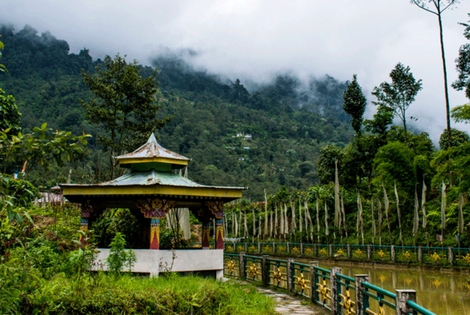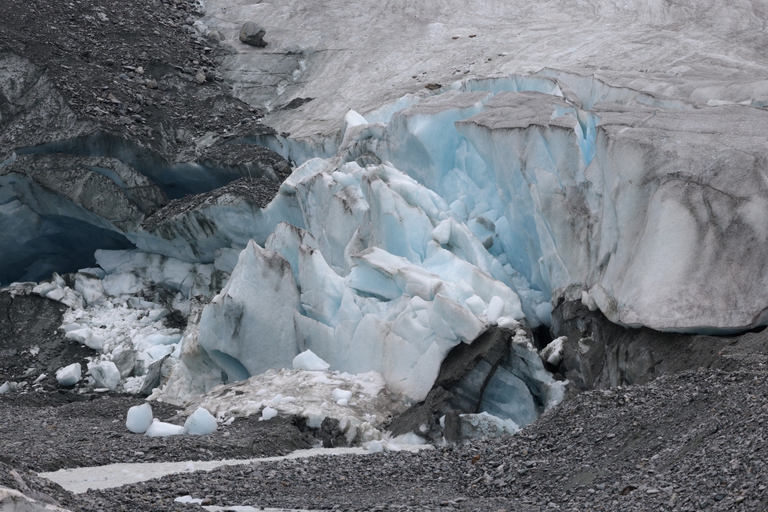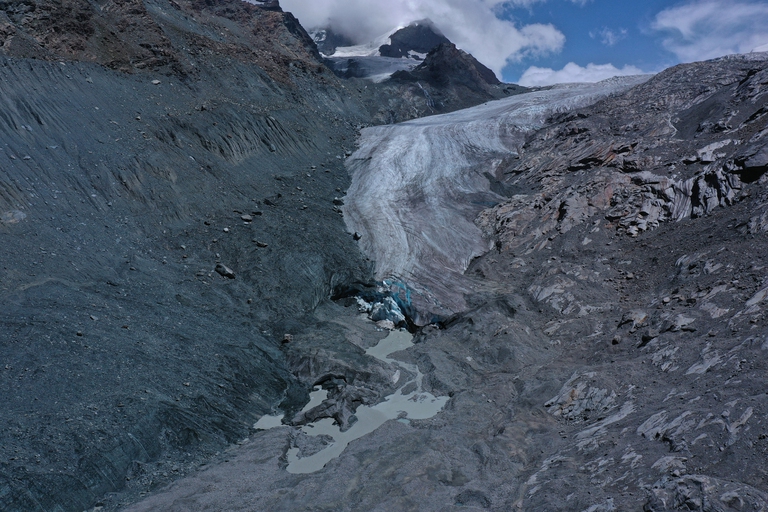
Sikkim is a hilly State in north-east India. Surrounded by villages that attracts outsiders thanks to its soothing calmness and natural beauty.
Switzerland’s glaciers are shrinking, with a new study finding that they have lost more than half their total volume since the early 1930s.
Switzerland’s glaciers shrunk by about half in the 85 years between 1931 and 2016. This is the main finding of a study, published in the scientific journal “The Cryosphere” on 22 Aug 2022, conducted by a team of researchers from ETH Zurich and the Swiss Federal Institute for Forest, Snow and Landscape Research (WSL).
To reconstruct the extent of Switzerland’s glacier ice loss in the 20th century, the researchers started with historical imagery. They used a technique called stereophotogrammetry, which has long been used in Switzerland.
Swiss glaciers cover a total area of 961.4 ± 22 sq km, about half of all glaciers in the European Alps. The country contains around 1400 glaciers, according to the latest Swiss glacier inventory published in 2021. The Bernese alps, the Central Swiss alps, and the Valais alps are the mountain ranges where most Swiss glaciers are located.
Though glacier advances and mass gains took place in the 1920s and late 1970s, increasing temperatures meant that the 20th century was unfavourable for glaciers. The negative trend continued and worsened with time and an accelerating mass loss trend has been observed in the past few decades.
“While there may have been growth over short-term periods, it’s important to keep the big picture in mind. Our comparison between the years 1931 and 2016 clearly shows that there was significant glacial retreat during this period,” explained Daniel Farinotti, the study’s co-author and Professor of Glaciology at ETH Zurich and WSL.
The researchers’ analysis relied on a terrestrial image archive known as TerrA. This archive contains 57,385 images, acquired during the first half of the last century, covering most of the Swiss mountains. Of this total, 38 per cent covers glaciers. These 21,703 images acquired between 1916 and 1947 cover around 86 per cent of the Swiss glaciers via at least two historical photos.
The researchers used modern photogrammetric techniques and the Agisoft Metashape software to semi-automatically reprocess the images to reconstruct the 1931 topography of 45 per cent of the Swiss glaciers. Their analysis led them to estimate a halving of glacier volume and a reduction in area cover by a third.
Not all glaciers are equally affected, as the researchers saw a stark spatial variability in glacier thinning. The glaciers in the northeast of Switzerland are losing mass twice as fast as those in the southwestern part of the country. Influencing factors seem to be the flatness level of the glacier’s terminus, its altitude, and the amount of debris.
“Glacier retreat is accelerating. Closely observing this phenomenon and quantifying its historical dimensions is important because it allows us to infer the glaciers’ responses to a changing climate. This information is needed to develop reliable scenarios for future glacier changes.” said Farinotti.
This 2022 study helps us to understand the past, present, and future state of the region’s glaciers at a time of dramatic atmospheric temperature increases and highlights how technology can help us better understand the history of our planet.
Siamo anche su WhatsApp. Segui il canale ufficiale LifeGate per restare aggiornata, aggiornato sulle ultime notizie e sulle nostre attività.
![]()
Quest'opera è distribuita con Licenza Creative Commons Attribuzione - Non commerciale - Non opere derivate 4.0 Internazionale.
Sikkim is a hilly State in north-east India. Surrounded by villages that attracts outsiders thanks to its soothing calmness and natural beauty.
Sikkim, one of the smallest states in India has made it mandatory for new mothers to plant saplings and protect them like their children to save environment
Nzambi Matee is a Kenyan engineer who produces sustainable low-cost construction materials made of recycled plastic waste with the aim of addressing plastic pollution and affordable housing.
Nearly 100 people have died in the heatwave in India that has badly hit millions of people who work under the blazing sun to earn their livelihood.
Deep-sea mining (DSM) could lead to irreversible damage to marine biodiversity and exacerbate the climate crisis, a new report has revealed.
Communities in Kwa-Zulu Natal have been at loggerheads with Tendele Coal Mine over land destruction, water pollution and the killing of activists.
In 2020, Mihela Hladin made a radical decision that many, in recent times, have probably considered. This is her story, with photos by Matt Audiffret.
There are still a lot of unknowns regarding last month’s train derailment in Ohio, especially in terms of its consequences on the environment and health.
Conservationists have warned that killing Quelea birds with toxic chemicals will have unintended negative consequences for other raptors and wild species.









